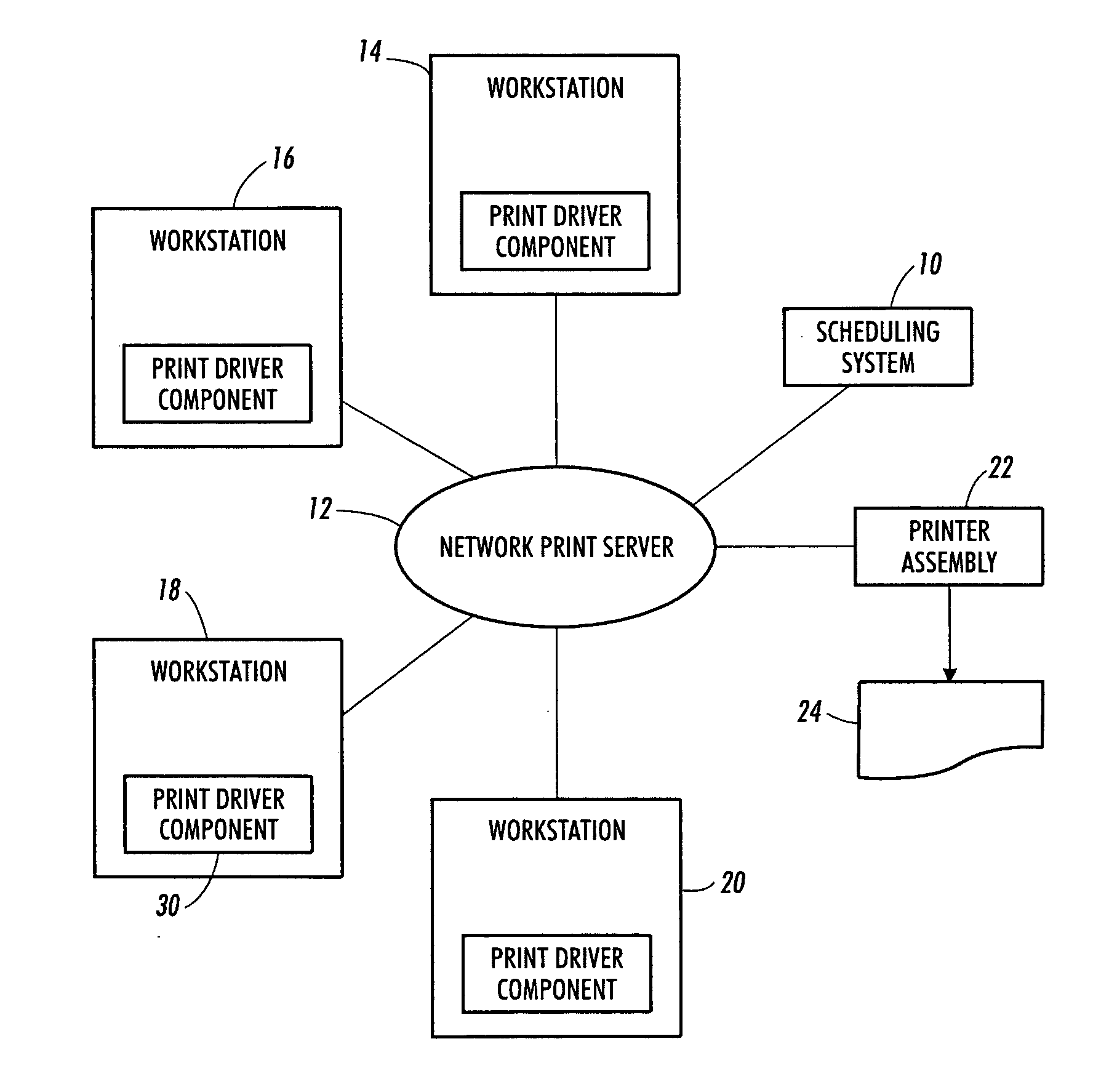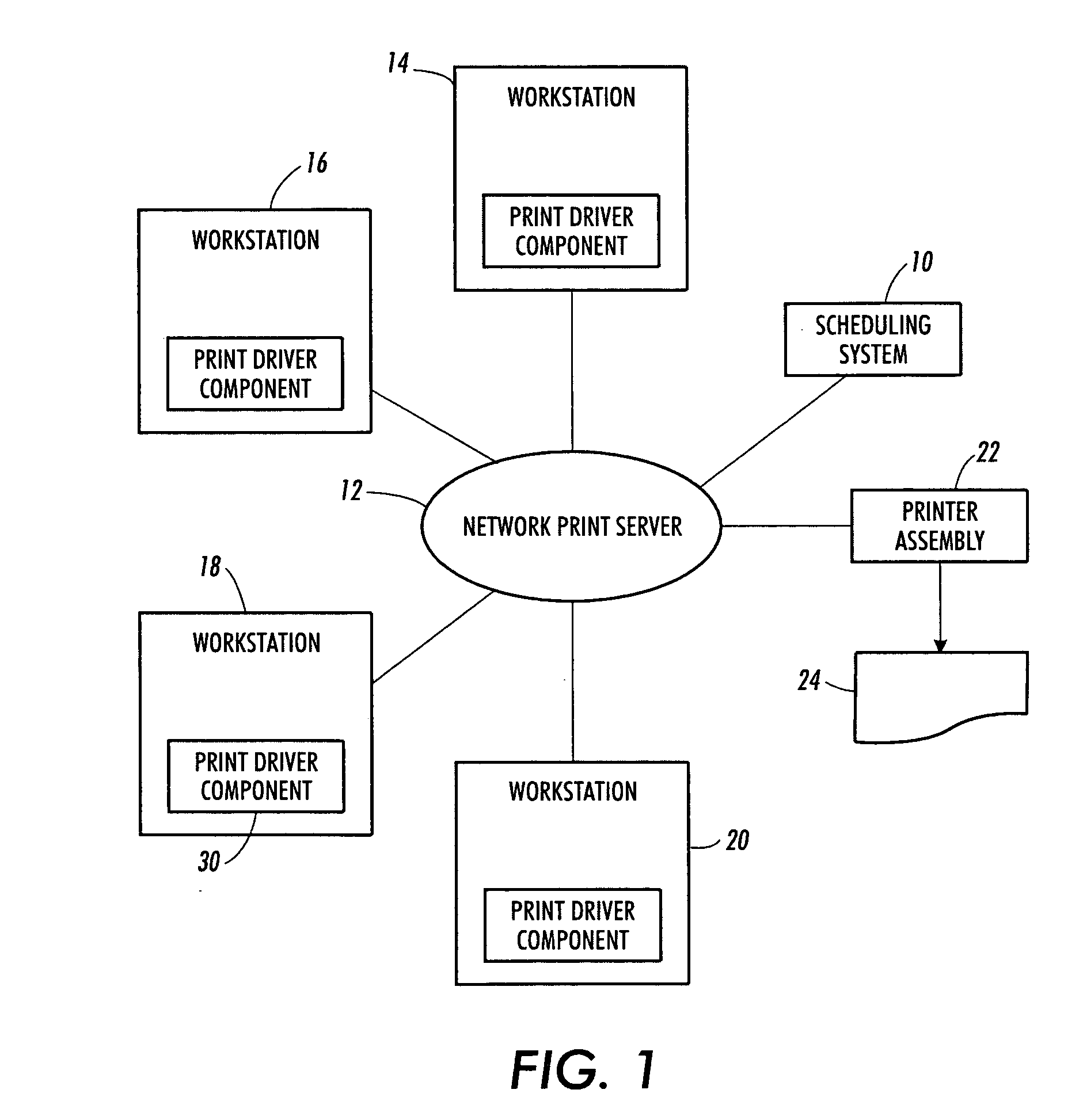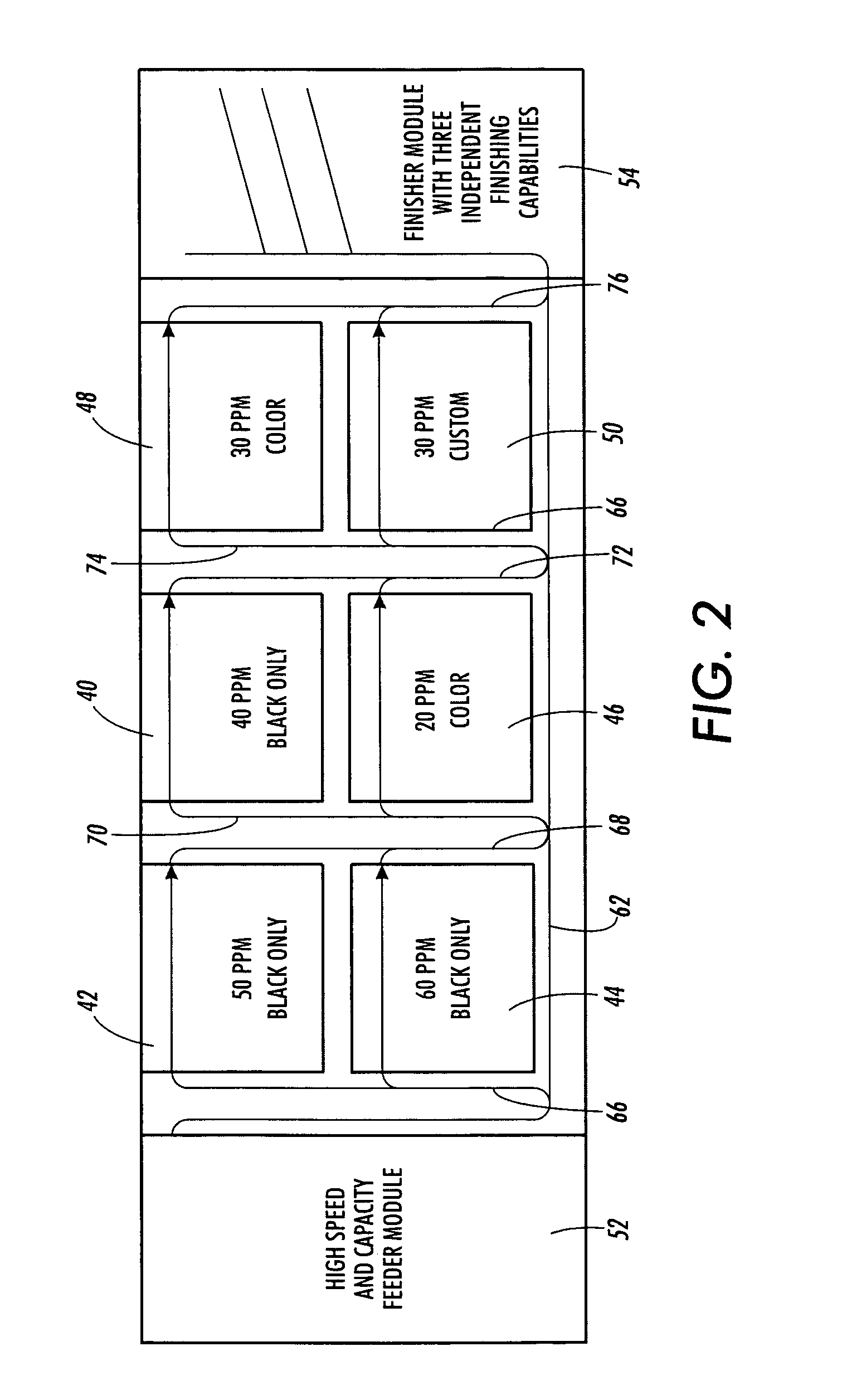Print sequence scheduling for reliability
a printing sequence and reliability technology, applied in the field of scheduling systems, can solve the problems of low reliability, startup and stopping are much more stressful than constant operation, and using a printer casually for relatively short jobs is much more stressful, and achieve the effect of maximizing the continuous run tim
- Summary
- Abstract
- Description
- Claims
- Application Information
AI Technical Summary
Benefits of technology
Problems solved by technology
Method used
Image
Examples
Embodiment Construction
[0022] A scheduling component for a printing system enables improvements in reliability of the printing system to be achieved by reducing the downtime or maximizing the continuous running time, for at least one of the printers, and in one embodiment, all of the printers in the printing system.
[0023] Reliability can be evaluated by studying the number of unscheduled maintenance visits for a printing system, or for a group of printing systems. Unscheduled maintenance visits are those which arise from a printing system failure, rather than through a planned maintenance schedule. From the data, an unscheduled maintenance rate (UMR) can be determined which is the average number of unscheduled maintenance visits per million prints (or other suitable number of prints). Data taken for a large number of printing systems has shown that generally, as the average monthly printing volume (AMPV) increases, the UMR decreases (i.e., reliability increases). Specifically, the customers who create la...
PUM
 Login to View More
Login to View More Abstract
Description
Claims
Application Information
 Login to View More
Login to View More - R&D
- Intellectual Property
- Life Sciences
- Materials
- Tech Scout
- Unparalleled Data Quality
- Higher Quality Content
- 60% Fewer Hallucinations
Browse by: Latest US Patents, China's latest patents, Technical Efficacy Thesaurus, Application Domain, Technology Topic, Popular Technical Reports.
© 2025 PatSnap. All rights reserved.Legal|Privacy policy|Modern Slavery Act Transparency Statement|Sitemap|About US| Contact US: help@patsnap.com



